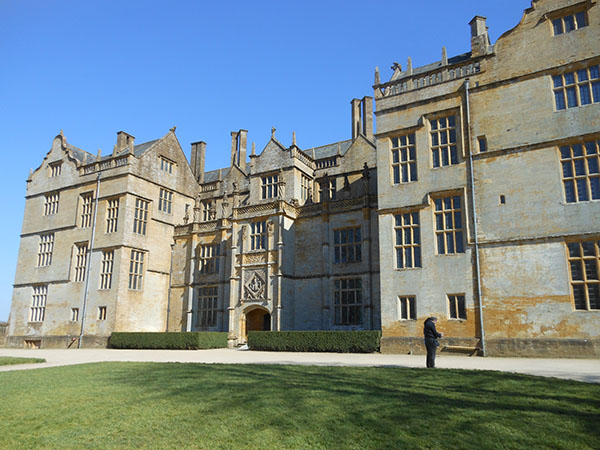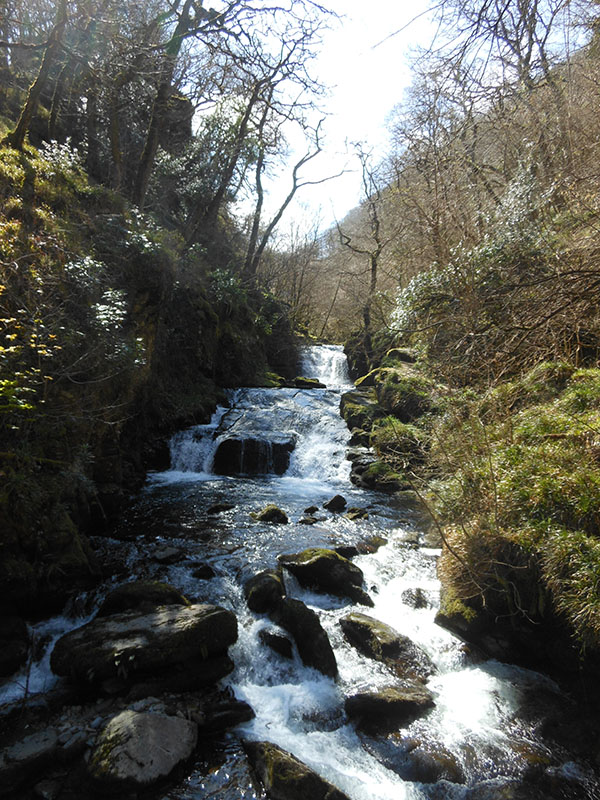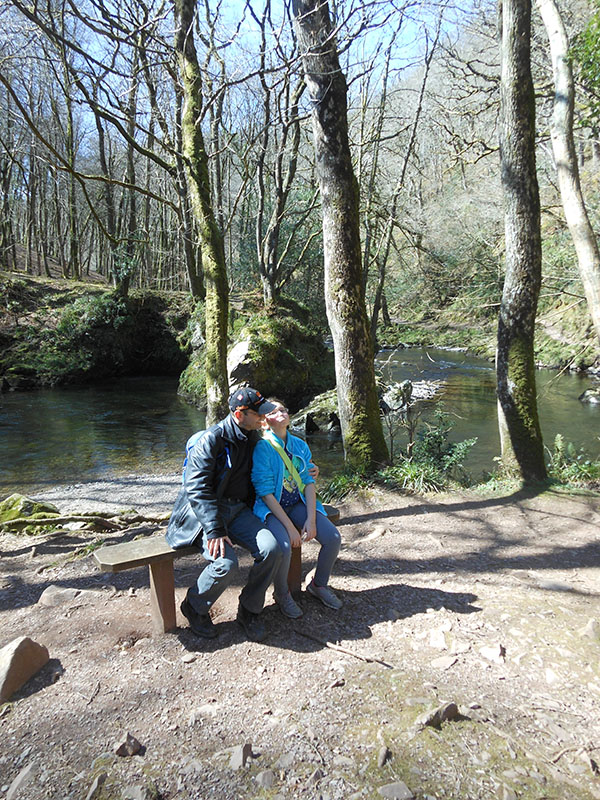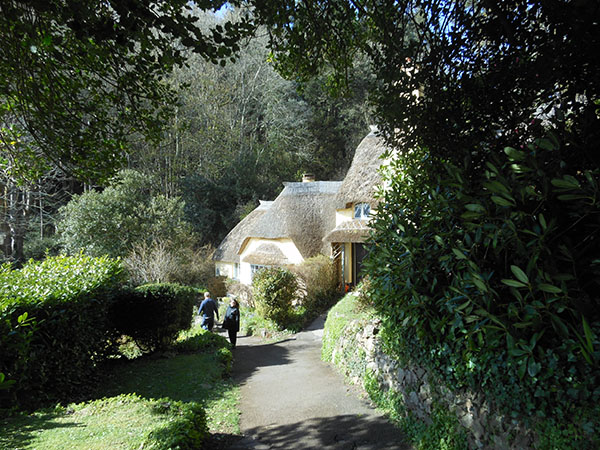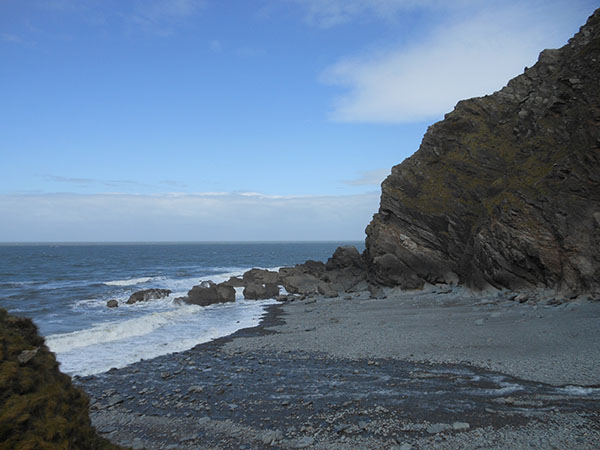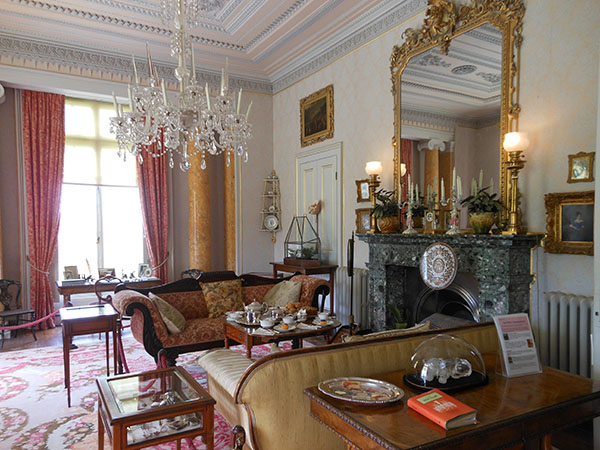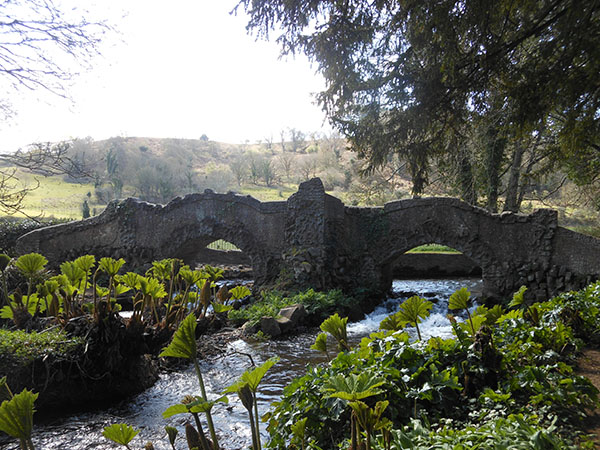By Yvonne Raptis
We recently spent a wind-swept week staying in a cottage on a farm on Exmoor in Devon, high above Lynmouth with stunning views over the Bristol Channel to Wales. This part of the country is rich in National Trust-owned countryside, and every day out walking we came upon NT signs, even when we didn’t realize that we were on the Trust’s property.
We passed several Trust houses on our drive from home in Tunbridge Wells and I had planned in advance to stop at Montacute House, as I love Tudor history and the house dates from the Elizabethan era. We were very happy to stop after several hours in the car, and were not disappointed. The house is beautifully preserved and almost completely unchanged since it was built, and in the Long Gallery, the longest in England, there are always paintings on loan from the National Portrait Gallery. Of course we visited the tea room, an obligatory part of a visit to any Trust site, before continuing our drive.
It was a beautiful and very steep hike across fields and along the cliff path, from our cottage down to the Trust’s Watersmeet, where the East Lyn River meets Farley Water. The town of Lynmouth further downstream, was devastated by a flood in 1952 when heavy rain on Exmoor swelled the river water and it is easy to imagine this happening, as the river runs through steep-sided gorges. We walked for several miles along the river enjoying the peace and the scenery, far from any roads, and of course stopped for tea and ice cream at the Visitors Centre, before the steep climb home.
My husband Tom was determined to set foot in Cornwall, this being his first visit to the south west, so we drove to Bude, which has a beautiful beach. We walked on the beach then took shelter from the rain in the beach cafe, before a walk on the headland, which we discovered is owned by the Trust.
The Trust owns the Holnicote estate which covers 12,000 acres of Exmoor, including 14 farms and four miles of stunning coastline. We drove up to Dunkery Beacon on the estate, the highest point on Exmoor, intending to walk to the top, but couldn’t because of driving rain and cold wind. You come to England for the scenery and history, not the weather! We then drove to Selworthy, one of the most beautiful villages in England, beautifully preserved by the Trust, with thatched cottages available for rent for vacations. The sun came out and we could even take our jackets off! Much to my disappointment the Periwinkle tearoom was closed as they need a new catering manager – nice place to work if you are looking for a new job! Next, off to Porlock, also on the estate, for a wind-swept walk along the beach.
The next day we drove west to Heddon Valley, owned by the Trust. This was a really good choice as we were able to walk along the river, sheltered by the steep sides of the valley, down to a sheltered cove by the sea. We had tried to walk around the cliff path from Wood Bay but had to head back as the wind was too strong and cold to feel safe on the cliff path several hundred feet above the sea.
On Friday we went to Arlington Court to watch a demonstration and talk about lambing, especially for our daughter, Ana, who had been complaining about hiking every day! You have to ring the doorbell to gain access to the house through the huge imposing front doors. The house dates from the Regency period and was home to the Chichester family until it was donated to the Trust in 1949 by Miss Rosalie Chichester. The rooms are home to her collection of treasures from her travels, including shells, pewter and model ships, and the stables house the Trust’s Carriage Museum, with more than 50 horse-drawn carriages on display. There are several walks that you can do around the estate, but as we had hiked many miles over the previous few days we chose instead to visit the tea room before heading back to our cottage.
When it was time to drive home we decided to take the road that goes across the north of Exmoor, overlooking the sea, rather than the faster road to the south which we had come by. We stopped at the Trust’s Dunster Castle located on the north-east edge of Exmoor. There has been a fortification on the site since Anglo-Saxon times, and parts of the castle date from the 12th century. It was almost completely destroyed during the English Civil War, and rebuilt in the Gothic style during the Victorian period. Since it was Easter, Ana wanted to do the Easter egg hunt around the grounds and castle, which gave us a nice tour of the whole site. We passed more Trust houses on the way home but didn’t have time to stop or the drive would have taken several days instead of a few hours!
